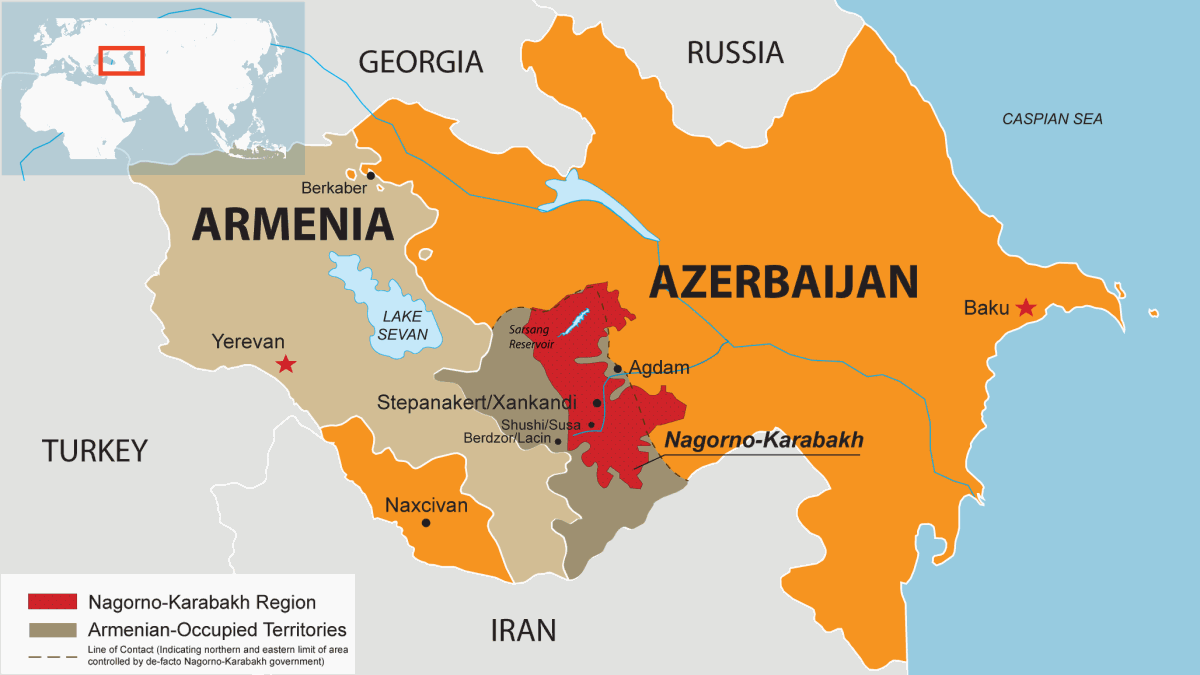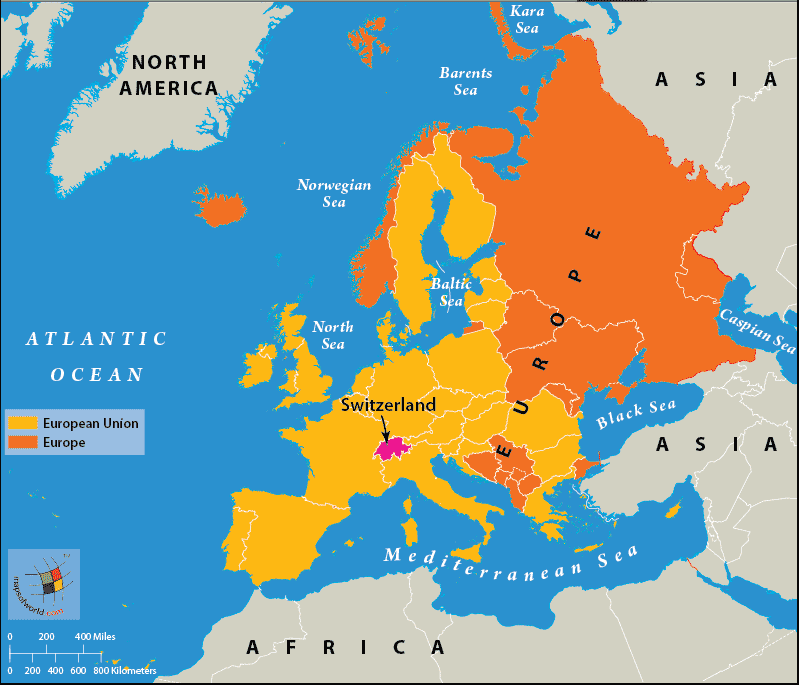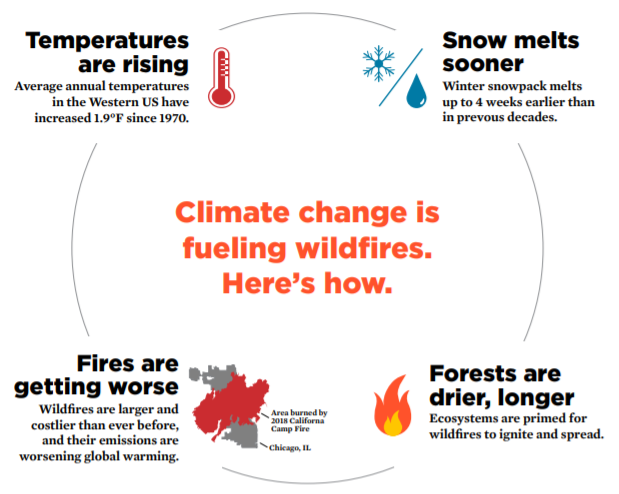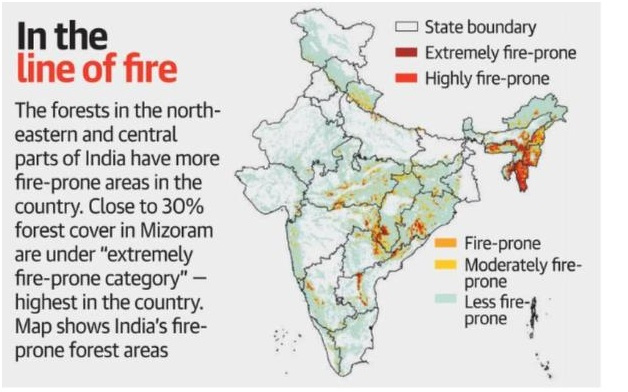International Relations
Armenia-Azerbaijan Conflict
Why in News
Recently, territorial dispute between Armenia and Azerbaijan over the Nagorno-Karabakh region has re-erupted with heavy clashes.
- Armenia and Azerbaijan are part of Transcaucasia or South Caucasia (geographical region in the vicinity of the southern Caucasus Mountains on the border of Eastern Europe and Western Asia consisting of Georgia, Armenia, and Azerbaijan).
Key Points
- Reasons for Dispute:
- Territorial: Nagorno-Karabakh region has 95% of the population as ethnically Armenian and is controlled by them but it is internationally recognised as part of Azerbaijan.
- Religious: Armenia is Christian majority, while Azerbaijan is Muslim majority country.
- Domestic Politics: The leaders of both the nations have fueled the issue time and again for their vested political interests.
- History of Dispute:
- 1920: Nagorno-Karabakh Autonomous Region was established within Azerbaijan by the then Soviet Union.
- 1988: Nagorno-Karabakh legislature passed a resolution to join Armenia despite the region's legal location within Azerbaijan’s borders.
- 1991 : The autonomous region officially declared that it would not join either of the countries after a referendum which was boycotted by Azerbaijan. War erupted between Armenia and Azerbaijan over the region, leaving roughly tens of thousands of casualties and hundreds of thousands of refugees.
- 1994: Russia mediated a cease-fire which has remained in place since.
- 2016: In April 2016, the region was particularly tense because of violent fighting between the two countries, which was known as the Four Day War.
- Apart from this, intermittent ceasefire violations between Azerbaijani and Armenian troops have caused hundreds of deaths in the past decade.
- Impact:
- Destabilize the Region: Renewed tensions threaten to reignite a military conflict between the countries and destabilize the South Caucasus region. This may cause social unrest in the region which is already suffering from the Covid-19 pandemic.
- Civilian Casualties: In this disputed region, there are hundreds of civilian settlements, residents of which would be directly impacted and potentially displaced if any large-scale war were to break out between the two countries
- Economic Impact: This could also disrupt oil and gas exports from the region, since Azerbaijan, is a significant oil and gas exporter to Europe and Central Asia. This may even lead to higher oil prices globally.
- International Involvement: Russia has closer ties with Armenia while Turkey and USA support Azerbaijan, and Iran has a large Azeri minority, which could escalate a crisis and entangle actors involved. Any military escalation would draw regional powers like Turkey and Russia more deeply into the conflict.
- Russia, Israel and many other countries have been supplying Arms to both the countries despite the arms embargo by the United Nations.
Effect on India
- India- Armenia: In recent years, Indian-Armenian bilateral cooperation has seen rapid growth.
- The then Vice-President of India visited Yerevan (Armenia) in 2017.
- Armenia bought the India SWATHI military radar system in March 2020.
- Many Indian students study in Armenian medical Universities and in recent years Armenia has witnessed an increasing flow of Indian labour migrants.
- For Armenia, close relations with India are vitally important as India provides a counter balance to the rival strategic axis between Azerbaijan, Pakistan and Turkey.
- India-Azerbaijan: India is part of the International North–South Transport Corridor (INSTC), a multimodal network of ship, rail, and road route for moving freight between India, Iran, Afghanistan, Azerbaijan, Russia, Central Asia and Europe.
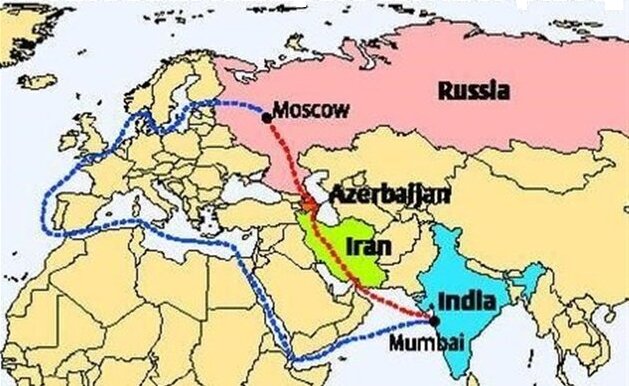
- Azerbaijan is a dialogue partner of Shanghai Cooperation Organisation (SCO), which India is a member of.
- In 2018, the then Indian External affairs minister had visited Baku (Azerbaijan), the first-ever bilateral visit of an Indian External Affairs Minister to Azerbaijan.
- India’s ONGC-Videsh is an investor in Azeri-Chirag-Gunashli (ACG) oil fields and Baku-Tbilisi-Ceyhan pipeline.
- However, Azerbaijan supports Pakistan’s position on the Kashmir issue.
- Pakistan Angle:
- India has supported Armenia while Azerbaijan has been supported by Pakistan. Pakistan was the second country to recognize Azerbaijan’s independence after Turkey. Also, Pakistan is the only country that does not recognize Armenia as an independent state and fully supports Azerbaijan’s position.
- China Angle:
- China has grown increasingly active in the caucasian region, conducting a number of programs and signing economic, political and military agreements with Armenia. Armenia has also agreed to participate in the Chinese Belt and Road project.
- However, China is an ally of its rival Azerbaijan and Armenia is also aware of its support to Pakistan.
Way Forward
- The conflict between the two countries has reached alarming levels and the international mediators should intervene immediately and push sides for substantive negotiations to prevent any further escalations.
- Growing Pakistan- China-Turkey’s influence in the south caucasus region is a source of concern for India. It is important for it to strengthen its ties with both the countries in line continuing its non-aligned stance, and call for peace in the region.
International Relations
Referendum on Free Movement: Switzerland-EU
Why in News
In a recent referendum, the Swiss people have rejected a bid to reduce immigration from the European Union (EU). Over five million Swiss voters cast ballots to decide whether to abandon an agreement with the EU which allows for the free movement of people across the country.
Key Points
- Agreement:
- Switzerland is not a member of the EU but has a series of interdependent treaties with Brussels (EU Headquarter) which allow it access to Europe's free trade area.
- 1992-2002: Switzerland negotiated and signed first bilateral agreements with the EU, making them interdependent and included the free movement of people which was again backed by a vote in 2000.
- It is a member of the EU’s Single Market, which allows people to move and work freely in all 27 EU countries as well as in Switzerland.
- Around 1.4 million out of the 8.2 million people residing in Switzerland are EU citizens and an average of 5,00,000 Swiss citizens are believed to be living in other EU countries at the moment.
- If people choose to end the agreement, the Swiss government will have to unilaterally void its free movement agreement with the EU by invoking a so-called guillotine clause.
- This clause would have impacted other bilateral deals on transport, research and trade with the EU, disrupting economic activity.
- Switzerland is not a member of the EU but has a series of interdependent treaties with Brussels (EU Headquarter) which allow it access to Europe's free trade area.
- Current Referendum:
- The right-wing Swiss People’s Party (SVP) initiated it, believing that the agreement has resulted in a significant strain on the welfare system and has led to overpopulation in the country.
- The move, sometimes called Swexit, has not been very popular among Swiss voters.
- A recent survey showed that more than 60% of respondents were against it, while a mere 35% backed it and the remaining were undecided.
- Supporters:
- The anti-free movement plan would allow Switzerland to control its borders and select only the immigrants it wants.
- Swiss citizens will also get preference for jobs and benefits in the country.
- Opponents:
- Scrapping the agreement would severely strain Swiss-EU relations.
- It would plunge a healthy economy into recession at an uncertain time and deprive hundreds of thousands of Swiss citizens of their freedom to live and work across Europe.
- The right-wing Swiss People’s Party (SVP) initiated it, believing that the agreement has resulted in a significant strain on the welfare system and has led to overpopulation in the country.
- Other Referendums:
- The freedom of movement measures were being considered alongside four other major nationwide referendums on paternity leave, tax breaks for child care, the right to hunt wolves and acquisition of around USD 6.5 billion worth of new fighter planes by 2030.
- Swiss people are given a direct say in their own affairs under the country's system of direct democracy. They are regularly invited to vote on various issues in national or regional referendums.
Governance
World Tourism Day 2020
Why in News
27th September has been celebrated as World Tourism Day since 1980. It was on this day in 1970 when the Statutes of the United Nations World Tourism Organization (UNWTO) were adopted which are considered a milestone in global tourism.
- The UNWTO is the United Nations specialised agency responsible for the promotion of responsible, sustainable and universally accessible tourism.
Key Points
- Significance:
- The World Tourism Day highlights the unique role of the tourism sector in preserving cultural and natural heritage all around the world. It acts as an auxiliary in safeguarding habitat and endangered species.
- It addresses the importance of the tourism sector in providing jobs and opportunities, mostly for women and youth, in rural as well as big cities.
- 2020 Celebrations:
- Theme for 2020: ‘Tourism and Rural Development’.
- The theme encourages the celebration of the unique role played by tourism in job creation outside of the big cities.
- Joint Hosts:
- In the history of 40 years, the official celebration of World Tourism Day will not be hosted by a single member state of the UNWTO.
- Nations from the MERCOSUR bloc (Argentina, Brazil, Paraguay and Uruguay, with Chile joining as member associate status) will also be the joint hosts.
- Covid-19 Impact: As per the data of the UNWTO, about 100 to 120 million jobs in the tourism industry are at risk directly.
- Theme for 2020: ‘Tourism and Rural Development’.
Tourism and India
- India has significant potential for tourism. Its wealth of culture, heritage, archaeology and nature uniquely places it to provide such experiences for people to rediscover themselves.
- There are 38 World Heritage Sites located in India. The World Heritage Sites are important places of cultural or natural heritage as described in the UNESCO World Heritage Convention, established in 1972.
- The industry’s contribution to India’s Gross Domestic Product in 2019 stood at 9.3%, and is said to account for over 8% of the total employment.
- Some Initiatives taken to promote tourism in India:
- Swadesh Darshan Scheme: It is a Central Sector Scheme, and was launched in 2014 -15 for integrated development of theme based tourist circuits in the country.
- PRASHAD Scheme: The ‘National Mission on Pilgrimage Rejuvenation and Spiritual, Heritage Augmentation Drive’ (PRASHAD) was launched by the Ministry of Tourism in the year 2014-15 with the objective of holistic development of identified pilgrimage destinations.
- Iconic Tourist Sites: The government is developing 17 “Iconic Tourist Sites” in the country as world class tourist destinations which in turn would serve as a model for other tourism sites. It is aimed at enhancing India’s soft power.
- Webinar Series Dekho Apna Desh: It was launched in January 2020 with the objective of creating awareness among the citizens about the rich heritage and culture of the country.
- It encourages citizens to travel widely within the country and enhances tourist footfalls leading to development of the local economy and creation of jobs at the local level.
- Destination North East-2020: It aims to bring the rest of India closer to North East (NE) India.
- SAATHI Application: It is an initiative of the Ministry of Tourism with the Quality Council of India, launched to assist the hospitality industry to continue to operate safely and thereby instill confidence among the Staff, employees and the guests about the safety of the hotel/unit.
- Challenges:
- The Swacch Survekshan (cleanliness survey) has projected many tourist hotspots such as Amritsar, Jaipur, Mumbai, Delhi, Srinagar, Varanasi and Shillong in poor light.
- Almost half of the world’s 50 most-polluted cities are in India.
- The habit of littering and ineffective waste management has led to widespread pollution.
- Tourists in India still face many infrastructure related problems like inadequate roads, water, sewer, hotels and telecommunications etc. Safety and security of tourists, especially of the foreign tourists, is a major hurdle to tourism development.
- Tourism sector got largely affected due to pandemic and associated lockdown. The travel ban hugely impacted tour operators and travel agencies, hotels, and the aviation industry.
- In 2019, foreign tourist arrivals in India stood at 10.89 million, achieving a yearly growth rate of 3.20% from 2018, earning USD 29.90 billion in foreign exchange earnings.
- But the top countries that once contributed to foreign tourists in India, namely China, Germany, the United States and the UK have been badly hit by the pandemic.
- The Swacch Survekshan (cleanliness survey) has projected many tourist hotspots such as Amritsar, Jaipur, Mumbai, Delhi, Srinagar, Varanasi and Shillong in poor light.
Way Forward
- Strengthening the waste collection system and educating common citizens about the importance of responsible disposal of various types of plastics would ensure less waste littered at tourist hotspots and other Indian cities. The government has also asked all the tourist hotspots cities to switch completely to clean fuel.
- Indian tourism has, for a long, just focused on creating more and more tourist destinations in the name of economic upliftment of local communities, rather than striking a balance between the needs of the host, visitor and the environment. It is time to turn the pandemic into an opportunity by redesigning the current business model into a long-term sustainable and resilient tourism industry.
Biodiversity & Environment
Climate Change and Forest Fire Link
Why in News
Scientists note that human-induced climate change promotes the conditions on which wildfires depend.
Key Points
- Wildfire: Also called forest, bush or vegetation fire, can be described as any uncontrolled and non-prescribed combustion or burning of plants in a natural setting such as a forest, grassland, brush land or tundra, which consumes the natural fuels and spreads based on environmental conditions (e.g., wind, topography).
- Wildfires can be incited by human actions, such as land clearing, extreme drought or in rare cases by lightning.
- There are three conditions that need to be present in order for a wildfire to burn: fuel, oxygen, and a heat source.
- Human-induced Climate Change: Increases in greenhouse gases resulting from human activities have led to a net effect of warming of the climate system leading to direct impacts including increased air and ocean temperatures, widespread melting of snow and ice and rising global average sea level. The increases in greenhouse gases can be attributed to fossil fuel use, land-use change, etc.
- Concerns:
- Forest fires have become an issue of global concern. In many countries, wildfires are burning larger areas, and fire seasons are growing longer due to global warming.
- Australia recently battled its largest bushfire on record, while parts of the Arctic, the Amazon and central Asia have also experienced unusually severe fires.
- Wildfires in Western USA (California) are another example.
- Globally, forest fires release billions of tons of CO2 into the atmosphere, while hundreds of thousands of people are believed to die due to illnesses caused by exposure to smoke from forest fires and other landscape fires.
- Factors:
- Fire Weather:
- Climate change increases the frequency and severity of fire weather around the world.
- Increased fire weather from climate change amplifies fire risk where fuels remain available.
- Fire weather is a combination of conditions that set the stage for the rapid spread of wildfires.
- High temperature
- Low Relative humidity
- Strong sustained winds (> 20 mph) carry oxygen and spread flames.
- Poor land and forest management also contributes to the wildfires, however, it does not alone account for the recent increases in the extent and severity of the wildfires globally.
- Factors Identified by the IPCC: The Fifth Assessment Report of the Intergovernmental Panel on Climate Change (IPCC), published in 2013, identified a few factors that could influence the way wildfires play out. These include:
- Global increase in average temperatures.
- Global increases in the frequency, intensity and extent of heatwaves (breaching of historically extreme temperature thresholds).
- Regional increases in the frequency, duration and intensity of droughts.
- Fire Weather:
Indian Scenario
- Forest Fire & Monitoring:
- A joint study report of the Ministry of Environment and Forests (MoEF&CC) and World Bank titled “Strengthening Forest Fire Management in India” released in June 2018 revealed that in the year 2000, 20 districts, representing 3% of India’s land area and 16% of forest cover accounted for 44% of all fire detections.
- The upgraded version of the Forest Fire Alert System (FAST 3.0) was released in January, 2019 with a separate activity of monitoring large forest fires.
- Forest Cover of States & UTs under different fire prone classes:
- Extremely Fire Prone: Mizoram > Tripura
- Very Highly Fire Prone: Mizoram > Manipur
- Highly Fire Prone: Nagaland > Manipur
- Moderately Fire Prone: Punjab > Nagaland
- It is seen that most of the fire prone forest areas are found in the north-eastern region and the central part of the country.
- India’s Initiative to Tackle Forest Fire:
- National Action Plan on Forest Fires, 2018
- MoEF&CC, has come up with the National Action Plan on Forest Fires, 2018 to revamp forest fire management in the country.
- Objectives: Informing, Enabling and Empowering forest fringe communities and Incentivizing them to work in tandem with the State Forest Departments (SFDs).
- The plan proposes nine strategies to address the issue, including establishment of a “Centre of Excellence on Forest Fire Management”at Forest Survey of India (FSI).
- Forest Fire Prevention and Management Scheme:
- The Forest Fire Prevention and Management Scheme (FPM) is the only centrally funded program specifically dedicated to assist the states in dealing with forest fires.
- The FPM replaced the Intensification of Forest Management Scheme (IFMS) in 2017.
- Funds allocated under the FPM are according to a center-state cost-sharing formula, with a 90:10 ratio of central to state funding in the Northeast and Western Himalayan regions and a 60:40 ratio for all other states.
- It also provides the states the flexibility to direct a portion of the National Afforestation Programme (NAP) and Mission for Green India (GIM) funding toward forest fire work.
- National Action Plan on Forest Fires, 2018
Way Forward
- Climate change is the reality, so are the increased severe forest fires. Management of forest fire needs to be tackled at various levels.
- First, at local or regional level by minimising the accidental chances of man-made fires.
- At national level it requires a specific approach to manage resources like Land and Forest to reduce the chance of such fires. Also, the need to handle climate change must be a part of policy making and implementation.
- At global level a sincere effort to reduce the impact of climate change along with reduction in factors causing climate change should be a united priority of all nations. Only then the link between climate change and forest fires can be weakened.
Biodiversity & Environment
Sandalwood Spike Disease
Why in News
India’s sandalwood trees are facing a serious threat due to Sandalwood Spike Disease (SSD).
Key Points
- The natural population of sandalwood in Marymoor Sandal Forest of Kerala and various reserve forests in Karnataka, including MM Hills (Malai Mahadeshwara Wildlife Sanctuary), are heavily infected with SSD.
- Sandalwood Spike Disease:
- It is an infectious disease which is caused by phytoplasma.
- Phytoplasmas are bacterial parasites of plant tissues — which are transmitted by insect vectors and involved in plant-to-plant transmission.
- There is no cure as of now for the infection.
- Presently, there is no option but to cut down and remove the infected tree to prevent the spread of the disease.
- The disease was first reported in Kodagu, Karnataka in 1899.
- More than a million sandalwood trees were removed in the Kodagu and Mysore region between 1903 and 1916.
- It is an infectious disease which is caused by phytoplasma.
- Concerns: About 1% to 5% of sandalwood trees lost every year due to the disease, scientists warn that it could wipe out the entire natural population if measures are not taken to prevent its spread.
- Another concern is, any delay in arresting the trend may result in the disease spreading to cultivated sandalwood trees.
- Reason: The present rapid spread of the infection is largely due to restrictions on green felling in forests, which has allowed vectors to spread the disease to healthy trees.
- Green felling (silviculture felling) is the felling of green trees of one or more types.
- Silviculture is the art and science of controlling the establishment, growth, composition, health, and quality of forests and woodlands to meet the diverse needs and values of landowners and society such as wildlife habitat, timber, water resources, restoration, and recreation on a sustainable basis.
- Recent Steps: In an effort to combat the killer disease, the Institute of Wood Science and Technology (IWST), Bangalore will join hands with the Pune-based National Centre for Cell Sciences for a three-year study, initiated by the Union Ministry of AYUSH with a financial allocation of Rs. 50 lakh.
- IWST is a Centre of Excellence for Sandalwood Research and Wood Science.
Red Sandalwood
- Red sanders (Pterocarpus santalinus) is endemic to South India.
- They are found in the Tropical Dry Deciduous forest of the Palakonda and Seshachalam hill ranges of Andhra Pradesh and also found in Kerala, Tamil Nadu and Karnataka.
- Red Sanders usually grow in the rocky, degraded and fallow lands with Red Soil and hot and dry climate.
- The International Union for Conservation of Nature (IUCN) has put it under the category of near threatened from earlier endangered species in the Red List.
- It is listed in Appendix II of the Convention on International Trade in Endangered Species of Wild Fauna and Flora (CITES).
- Appendix II – Species which are not necessarily threatened with extinction, but in which trade must be controlled to avoid utilisation incompatible with their survival.
- It is known for its rich hue and therapeutic properties, is high in demand across Asia, particularly in China and Japan, for cosmetics and medicinal products, wood-works and musical instruments.
- Its popularity can be gauged from the fact that a tonne of red sanders costs anything between Rs. 50 lakh to Rs. 1 crore in the international market.
Indian History
Bhagat Singh’s Birth Anniversary
Why in News
28th September is the birth anniversary of revolutionary freedom fighter Bhagat Singh.
Key Points
- Born in 1907 in Lyallpur district (now in Pakistan), Bhagat Singh grew up in a Sikh family deeply involved in political activities.
- He belonged to a generation that was to intervene between two decisive phases of the Indian national movement - the phase of the 'Extremism' of Lal-Bal-Pal and the Gandhian phase of nonviolent mass action.
- In 1923, Bhagat Singh joined the National College, Lahore which was founded and managed by Lala Lajpat Rai and Bhai Parmanand.
- The College was set up as an alternative to the institutions run by the Government, bringing to the field of education the idea of Swadeshi.
- In 1924 in Kanpur, he became a member of the Hindustan Republican Association (HRA), started by Sachindranath Sanyal a year earlier. The main organiser of the Association was Chandra Shekhar Azad and Bhagat Singh became very close to him.
- It was as a member of the HRA that Bhagat Singh began to take seriously the philosophy of the Bomb.
- Armed revolution was understood to be the only weapon with which to fight British imperialism.
- In 1928, HRA was renamed from Hindustan Republican Association to Hindustan Socialist Republic Association (HSRA).
- In 1925, Bhagat Singh returned to Lahore and within the next year he and his colleagues started a militant youth organisation called the Naujawan Bharat Sabha.
- In April 1926, Bhagat Singh established contact with Sohan Singh Josh and through him the 'Kirti Kisan Party' which brought out the monthly magazine Kirti in Punjabi.
- For the next year Bhagat Singh worked with Josh and joined the editorial board of Kirti.
- In 1927, he was first arrested on charges of association with the Kakori Case accused for an article written under the pseudonym Vidrohi (Rebel).
- To take revenge for the death of Lala Lajpat Rai, Bhagat Singh and his associates plotted the assassination of James A. Scott, the Superintendent of Police. However, the revolutionaries mistakenly killed J.P. Saunders. The incident is famously known as Lahore Conspiracy case (1929).
- In 1928, Lala Lajpat Rai had led a procession to protest against the arrival of the Simon Commission. The police resorted to a brutal lathi charge, in which Lala Lajpat Rai was severely injured and later succumbed to his injuries.
- Bhagat Singh and B.K. Dutt threw a bomb on 8 April, 1929 in the Central Legislative Assembly, in protest against the passing of two repressive bills, the Public Safety Bill and the Trade Dispute Bill.
- The aim, as their leaflet explained, was not to kill but to make the deaf hear, and to remind the foreign government of its callous exploitation.
- Both Bhagat Singh and B.K. Dutt surrendered thereafter and faced trial so they could further promote their cause. They were awarded life imprisonment for this incident.
- However, Bhagat Singh was re-arrested for the murder of J.P. Saunders and bomb manufacturing in the Lahore Conspiracy case. He was found guilty in this case and was hanged on 23rd March, 1931 in Lahore along with Sukhdev and Rajguru.
- Every year, March 23 is observed as Martyrs’ Day as a tribute to freedom fighters Bhagat Singh, Sukhdev, and Rajguru.
Governance
Education Through Radio in Odisha
Why in News
Recently, the state government of Odisha has decided to reach out to children in remote areas through the radio as online classes fail to reach most students due to poor mobile connectivity.
Key Points
- Education Through Radio:
- The state's School and Mass Education Department has launched classroom teaching through All India Radio.
- Students from Class I to VIII can learn their lessons through 15-minutes of teaching by experienced teachers through radio.
- It has been highlighted that a student can cover six pages of his textbook within 15 minutes of a radio programme.
- Although teaching through radio would not be effective as it could have been in a physical classroom, the dire situation has forced the administration to try different methods for reaching students.
- Other Initiatives:
- Students have been provided with textbooks even though schools in Odisha have been closed since 17th March 2020.
- Three hours of classroom instruction are also available through Doordarshan.
- Since considerable time has been lost due to the closure of schools, school syllabus has been reduced by 30%.
- Reasons for the Move:
- The schools could not be opened due to Covid-19 pandemic so the education department tried to reach students with online classes, mostly through smartphones.
- However, out of the 60 lakh students, hardly 22 lakhs were being reached during the lockdowns.
- The situation worsened when the lockdown was lifted and parents started going to their workplaces taking the only smartphone in the family with them.
- It led to a further drop of 6 to 7 lakh students attending virtual classes.
- Those who have a sufficient number of smart devices for students, suffer due to poor network coverage.
- The schools could not be opened due to Covid-19 pandemic so the education department tried to reach students with online classes, mostly through smartphones.
Other Nationwide Initiatives for Education
- Centre’s announcement to start the 2020-21 academic year virtually.
- Plans to distribute laptops or tablets to 40% of all college and university students over the next five years and to equip all government schools with Information and Communication Technology (ICT).
- Digital Infrastructure for Knowledge Sharing (DIKSHA) mobile app has been offered to the states as a platform to provide content in local languages.
- The Kendriya Vidyalaya Sangathan has deployed its SWAYAM Prabha portal which has lectures on direct-to-home (DTH) and online, to help students.
- Different e-learning techniques through virtual platforms like YouTube, Zoom app and Google Classroom are being used by some institutions.
- PRAGYATA guidelines on digital education.

